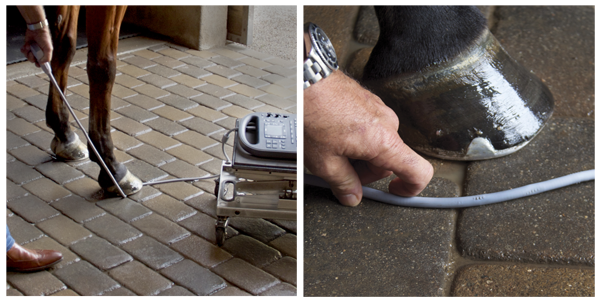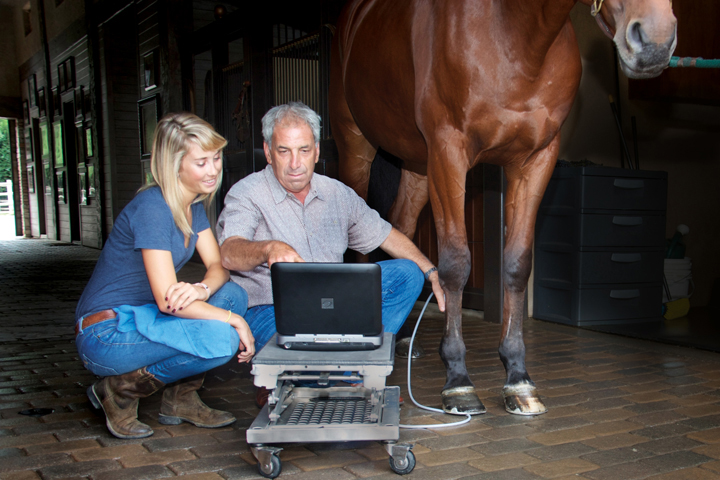
Ultrasound has been used in veterinary medicine for over two decades, and is now an essential tool for vets investigating a wide range of pathologies. Equine medicine, in particular, relies on highly portable ultrasound systems to investigate lameness and performance issues, as well as for reproductive medicine and colic.
Rosana Domingo Ortiz, Director of Equine Clinical Services at CEU Cardenal Herrera University’s Department of Veterinary Medicine and Veterinary Surgery, explained how Sonosite’s point-of-care ultrasound systems fit into her department’s clinical and teaching practices.
"Ultrasound has been part of the vet’s ‘toolbox’ for over 20 years, extending our clinical exploration capabilities and providing greater insight into many conditions and traumatic injuries. For example, one of the main causes of death in the horses we see is colic, and ultrasound provides vital support in the early diagnosis of horses with colic pain, helping us to decide if a case can be treated medically or requires immediate surgery.
It’s also very important for the diagnosis of locomotive issues and lameness, especially pathologies affecting the tendons or ligaments. It is commonly used to investigate performance is-sues in sports horses, as well as to monitor recovery.
When I first started using ultrasound, there was no formal education in this technique for trainee vets as part of their studies. In fact, there was very little practical training at all. This has now changed, and our Equine Clinic I and II courses include many hours of hands-on experience to supplement the theoretical understanding. Ultrasound is a key part of this – all students need to be able to perform heart, chest, abdomen and soft tissue scans – so we need robust and easy-to-use ultrasound instruments that can be used for both teaching and clinical activities.
We currently have two Sonosite systems in the department: an Edge II with a trans-rectal transducer, which is shared between the equine, bovine and ovine teaching staff for reproduc-tive investigations, and a larger X-Porte with three transducers, which is used exclusively for horses.
We looked at instruments from several manufacturers when selecting these systems and, to be honest, the FUJIFILM Sonosite systems stood out from the competition for a number of reasons.
First, they offer good image quality for an instrument of this size. Equally importantly, they are very easy to use. This is crucial for us, as many different staff members and students routinely use the systems, so they must be intuitive, with straightforward operation and easy to find func-tions.
And finally, they are robust, making them ideal for veterinary work and resistant to use by many students who may be unfamiliar with this type of equipment.
Our student timetables are very tightly scheduled, plus we need to have ultrasound available to use in our clinical practice, so we cannot afford to be without an instrument if there is a problem. Sonosite is very responsive, and offers a loaner instrument if any technical issues with our system cannot be resolved immediately. We will soon be moving to a new, dedicated equine facility, and hope to be able to purchase another Sonosite system to aid our clinical practice."
Learn More About Sonosite Ultrasound For Equine Medicine
An equine veterinarian’s day can be unpredictable and so can their patients. The demands of an equine vet with their ultrasound can push the limits of durability. Discover the most dependable, innovative, and easy-to-use equine ultrasound systems ever.


